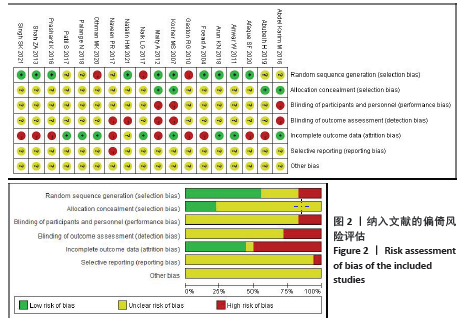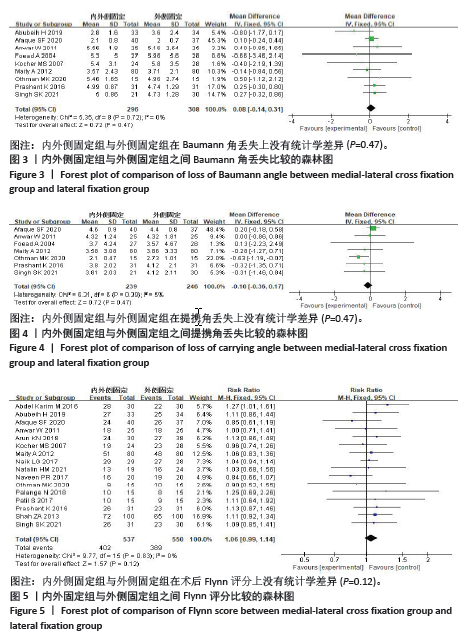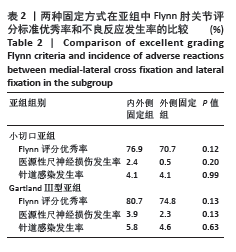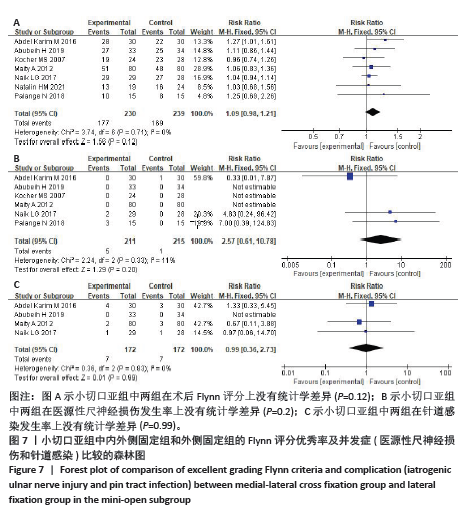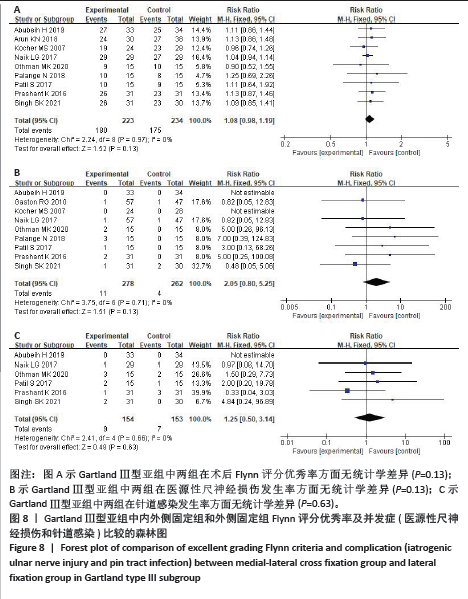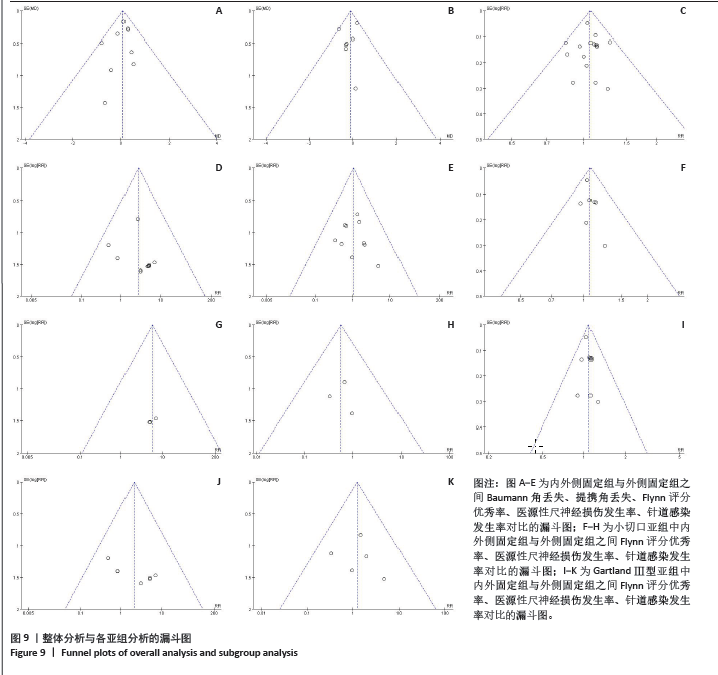[1] KHOSHBIN A, LEROUX T, WASSERSTEIN D, et al. The epidemiology of paediatric supracondylar fracture fixation: a population-based study. Injury. 2014;45(4): 701-708.
[2] LI Y, WEI S, CANAVESE F, et al. Treatment and Outcome of Supracondylar Humeral Fractures in Children Over 10 Years of Age at the Time of Injury: A Review of 60 Cases. J Pediatr Orthop. 2024;44(7):e580-e587.
[3] WANG Y, CHONG Q, ZHANG S, et al. Analysis of risk factors for failed closed reduction in pediatric Gartland Type III supracondylar humerus fracture. J Shoulder Elbow Surg. 2024;33(10):2279-2289.
[4] SCHULTZ RJ, AMARAL JZ, BRIDGES CS, et al. Gartland classification concordance of supracondylar fractures among pediatric emergency medicine physicians, radiologists, and orthopedic surgeons. Pediatr Radiol. 2024;54(7):1180-1186.
[5] FARROW L, ABLETT AD, MILLS L, et al. Early versus delayed surgery for paediatric supracondylar humeral fractures in the absence of vascular compromise: a systematic review and meta-analysis. Bone Joint J. 2018;100-B(12):1535-1541.
[6] DE L, DURÁN D, DE L, et al. Supracondylar fractures of the humerus in children. Clin Orthop Relat Res. 2005;19(3):57-64.
[7] ZHAO JG, WANG J, ZHANG P. Is Lateral Pin Fixation for Displaced Supracondylar Fractures of the Humerus Better Than Crossed Pins in Children? Clin Orthop Relat Res. 2013;471(9):2942-2953.
[8] WORATANARAT P, ANGSANUNTSUKH C, RATTANASIRI S, et al. Meta-analysis of pinning in supracondylar fracture of the humerus in children. J Orthop Trauma. 2012;26(1):48-53.
[9] NA Y, BAI R, ZHAO Z, et al. Comparison of lateral entry with crossed entry pinning for pediatric supracondylar humeral fractures: a meta-analysis. J Orthop Surg Res. 2018; 13(1):68.
[10] DEKKER AE, KRIJNEN P, SCHIPPER IB. Results of crossed versus lateral entry K-wire fixation of displaced pediatric supracondylar humeral fractures: A systematic review and meta-analysis. Injury. 2016;47(11): 2391-2398.
[11] OMID R, CHOI PD, SKAGGS DL. Supracondylar Humeral Fractures in Children. JBJS. 2008;90(5):1121-1132.
[12] LEE KM, CHUNG CY, GWON DK, et al. Medial and lateral crossed pinning versus lateral pinning for supracondylar fractures of the humerus in children: decision analysis. J Pediatr Orthop. 2012;32(2): 131-138.
[13] FREDJ AB, RBAI H, CHATBOURI F, et al. Clinical and radiographic outcomes after paediatric supracondylar humeral fractures treated with combined intramedullary and lateral wire fixation: our experience in fifty-one cases. Int Orthop. 2023;47(12):2901-2906.
[14] MCINNES MDF, MOHER D, THOMBS BD, et al. Preferred Reporting Items for a Systematic Review and Meta-analysis of Diagnostic Test Accuracy Studies: The PRISMA-DTA Statement. JAMA. 2018; 319(4):388-396.
[15] CALOGERO V, AULISA AG, CARERI S, et al. Evaluation of Gartland Classification, Baumann Angle and Anterior Humeral Line in Paediatrics Supracondylar Fractures: An Inter and Intra-Observer Reliability Study. J Clin Med. 2023;13(1):167.
[16] FLYNN JC, MATTHEWS JG, BENOIT RL. Blind pinning of displaced supracon-dylar fractures of the humerus in children. Sixteen years’experience withlong-term follow-up, J Bone Jt Surg Am. 1974;56:263-272.
[17] HIGGINS JP, ALTMAN DG, GØTZSCHE PC, et al. The Cochrane Collaboration’s tool for assessing risk of bias in randomised trials. BMJ. 2011;343:d5928.
[18] FOEAD A, PENAFORT R, SAW A, et al. Comparison of two methods of percutaneous pin fixation in displaced supracondylar fractures of the humerus in children. J Orthop Surg (Hong Kong). 2004; 12(1):76-82.
[19] ANWAR W, RAHMAN N, IQBAL MJ, et al. Comparison of the two methods of percutaneous k - wire fixation in displaced supracondylar fracture of humerus in children. J Postgrad Med Institute. 2011; 25(4):356-361.
[20] ABUBEIH H, ADLY W, GAAFARY K, et al. Percutaneous cross-pinning versus two lateral entry pinning in Gartland type III pediatric supracondylar humerus fractures. Egypt Orthop J. 2019;54:52-61.
[21] PRASHANT K, LAKHOTIA D, BHATTACHARYYA TD, et al. A comparative study of two percutaneous pinning techniques (lateral vs medial-lateral) for Gartland type III pediatric supracondylar fracture of the humerus. J Orthop Traumatol. 2016;17(3):223-229.
[22] PATIL S, GAONKAR N, PANDEY P, et al. A comparative study of two percutaneous pinning techniques (Cross K wire vs Lateral K wire) for Gartland type III pediatric supracondylar fracture of the humerus. Med J. 2017;3(4):665-668.
[23] OTHMAN MK HS. Percutanous crossed pinning versus twolateral pinning for treating supracondylar humeral fracture in children: comparative study. J Kirkuk Med Coll. 2020;8:64-77.
[24] SK S, P S, SP G, et al. A comparative study ofcross pinning versus lateral pinning technique in the management ofcompletely displaced type-lll supra condylar humerus fracture in therural India children: a prospective study. J Orthop Traumatol Rehabil. 2021;13:122-128.
[25] AFAQUE SF, SINGH A, MAHARJAN R, et al. Comparison of clinic-radiological outcome of cross pinning versus lateral pinning for displaced supracondylar fracture of humerus in children: A randomized controlled trial. J Clin Orthop Trauma. 2020; 11(2):259-263.
[26] GASTON RG, CATES TB, DEVITO D, et al. Medial and lateral pin versus lateral-entry pin fixation for Type 3 supracondylar fractures in children: a prospective, surgeon-randomized study. J Pediatr Orthop. 2010; 30(8):799-806.
[27] KN A, RAMACHANDRA K, VEERABHADRA J, et al. A prospective study of crossed versus lateral pinning for displaced extension-type supracondylar fractures of humerus. AkiNik Publications. 2018;4(4):737-740
[28] NAVEEN PR, CHAITANYA PR. A prospective study of crossed versus lateral only pinning in the treatment of displaced supracondylar fractures of the humerus in children. Med J. 2017;3(3):400-404.
[29] ABDEL KARIM M, HOSNY A, NASEF ABDELATIF NM, et al. Crossed Wires Versus 2 Lateral Wires in Management of Supracondylar Fracture of the Humerus in Children in the Hands of Junior Trainees. J Orthop Trauma. 2016;30(4):e123-e128.
[30] KOCHER MS, KASSER JR, WATERS PM, et al. Lateral entry compared with medial and lateral entry pin fixation for completely displaced supracondylar humeral fractures in children. A randomized clinical trial. J Bone Jt Surg Am. 2007;89:706-712.
[31] MAITY A, SAHA D, ROY DS. A prospective randomised, controlled clinical trial comparing medial and lateral entry pinning with lateral entry pinning for percutaneous fixation of displaced extension type supracondylar fractures of the humerus in children. J Orthop Surg Res. 2012;7:6.
[32] NATALIN HM, SILVA J, VOLPON JB. Comparison of two methods of fixation of supracondylar fractures of the humerus in children. Acta Ortop Bras. 2021;29(5): 263-267.
[33] PALANGE ND, GS P, MANE A, et al. A comparison between percutaneous cross k wire vs lateral k wires fixation in management of Type III Gartland paediatric supracondylar fractures. Med J. 2019;5(2): 119-122.
[34] NAIK LG, SHARMA GM, BADGIRE KS, et al. Cross pinning versus lateral pinning in the management of type III supracondylar humerus fractures in children. J Clin Diagn Res. 2017;11:RC01-3.
[35] ZA S, U A. Displaced supracondylar humeral fractures; treatment among children: crossed versus lateral pinning. Prof Med J. 2013;20:818-824.
[36] BABAL JC, MEHLMAN CT, KLEIN G. Nerve injuries associated with pediatric supracondylar humeral fractures: a meta-analysis. Journal of Pediatric Orthopaedics. 2010;30(3):253-263.
[37] PAVONE V, VESCIO A, RICCIOLI M, et al. Is Supine Position Superior to Prone Position in the Surgical Pinning of Supracondylar Humerus Fracture in Children? J Funct Morphol Kinesiol. 2020;5(3):57.
[38] GONG HS, CHUNG MS, OH JH, et al. Oblique closing wedge osteotomy and lateral plating for cubitus varus in adults. Clin Orthop Relat Res. 2008;466(4):899-906.
[39] REES AB, SCHULTZ JD, WOLLENMAN LC, et al. A Mini-Open Approach to Medial Pinning in Pediatric Supracondylar Humeral Fractures May Be Safer Than Previously Thought. J Bone Joint Surg Am. 2022;104(1):33-40.
[40] PATRIOTA GSQA, ASSUNÇÃO FILHO CA, ASSUNÇÃO CA. What is the best fixation technique for the treatment of supracondylar humerus fractures in children? Rev Bras Ortop. 2017;52(4): 428-434.
[41] KWOK SM, CLAYWORTH C, NARA N. Lateral versus cross pinning in paediatric supracondylar humerus fractures: a meta analysis of randomized control trials. ANZ J Surg. 2021;91(5):980-985.
[42] CHEN C, ZHANG Y, CHEN H, et al. The effects of postoperative malrotation alignment on outcomes of Gartland type III/IV paediatric supracondylar humeral fractures treated by close reduction and percutaneous K-wire fixation. J Orthop Surg Res. 2024;19(1):26.
[43] GREVE F, BIBERTHALER P, CASTELLANI C, et al. Beneficial Perioperative Aspects Favor the Use of Percutaneous Crossed Pinning over Antegrade Nailing in Pediatric Supracondylar Fractures-A Retrospective Comparative Study. Children (Basel). 2023; 10(5):830. |

